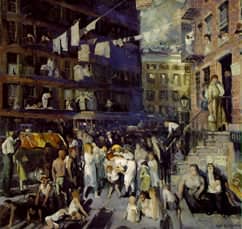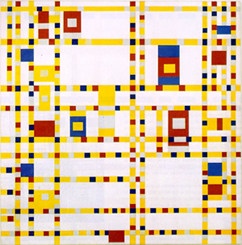JUN 01: Lesson Two - The Great Gatsby
Lesson
Assignment
(100 marks)
Open a new PPT document. Label it as E301U4L2surname
In this document, complete the art assignment as outlined below.
Submit this assignment using the Dropbox for U4L2 Gatsby art
“What is the relationship between great books and great art?”
Imagine that a book publisher is creating a new series of great books that will be presented with companion pieces of great art. You have been hired to produce one of these great books/great art projects for The Great Gatsby.
Phase I: The Great Book
- Select five key scenes in The Great Gatsby. For each scene write a rationale as to why this scene is critical to the book as a whole.
- Analyze each scene you have chosen in the following way:
- Determine what the major focus of the scene is. For example, is it plot development, character, setting, theme, other? Explain.
- Identify dominant sensory images in the scene -- that is, those descriptions that appeal to the senses; make sure to note key visual elements. Why are they important?
- Describe the mood or tone of the scene. Choose two or three vivid adjectives to describe the mood; do no merely say 'sad', but aim for precision in word choice, perhaps 'heart-wrenching' or 'melancholy' or 'bittersweet' or 'wistful' or 'despairing'. Include adjectives that reveal activity, sounds, and smells, also, not merely emotion. Use a thesaurus and dictionary to help you. Explain why this adjective describes the mood.
- Select directly from the text five to ten key words that you feel embody the gist of the scene. Explain each word in at least one sentence.
- Select three or four colours that you feel reflect the overall tone and mood of the scene; the colours need not be mentioned in the text. Explain each colour in at least one sentence.
Phase II: The Great Art
- In very general terms, art can be divided into two major types: representational art, or art that attempts to re-create faithfully the images found in the world around us' and abstract art, or art that attempt to get to the essence of the world around us but does not necessarily attempt to imitate its images.
For example, a representational artist might wish to express a scene of vitality and movement in an urban area. An abstract artist might, on the other hand, aim for the spirit and feeling of vitality through the use use of colour and form. Either work would be very effective in conveying the same idea through different styles. Consider the examples below.
 |
|
| Representational Cliff Dwellers By George Bellows, 1913 Oil on canvas 40 1/4 x 42 1/8 in. Los Angeles County Museum of Art |
Abstract Broadway Boogie Woogie |
- Using the links provided below, browse the various collections of paintings. Using as your guide the analyses (Phase I) you have done on the critical scenes from The Great Gatsby, find one companion piece of great art to complement each scene selected from the novel. Each painting must be an example of great art and not something created specifically for The Great Gatsby!!
- Try to include both representational and abstract art in your final product. Be open-minded; stretch your imagination, but remember to be guided by the gist of each scene.
- Prepare for the publisher a list that includes the title and artist for each work you have chosen to correspond to the key scenes in The Great Gatsby. In a paragraph of at least 250 words for EACH, give the reason for each choice.
- Submit this assignment in PowerPoint format, as though you are presenting to a publisher.
- You MAY want to focus on the role of honesty when an individual experiences tension between optimism and reality." For example, how different would the lives of the various characters had been had honesty been the nature of their motivations?
